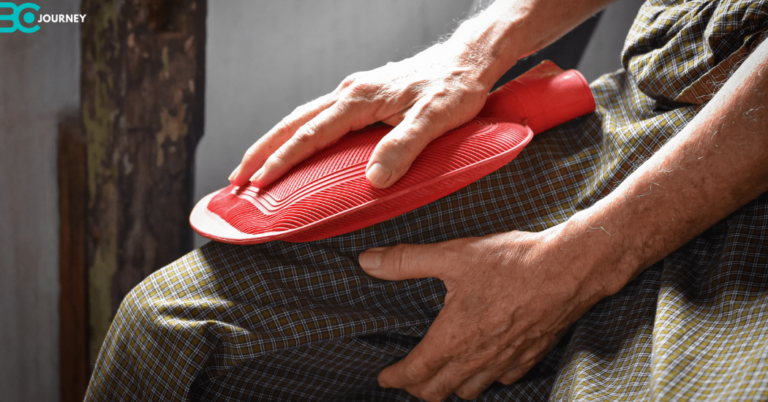image designed by freepik
Understanding Sciatica nerve Pain
Sciatica pain is a very debilitative state that can affect anyone. It often results from pressure on the sciatic nerve, which winds from the lower back through the hips and buttocks down each leg. Understanding the pain of sciatica is absolutely crucial for effective management and recovery.
This article examines the problems, symptoms, and treatments for sciatica: medical versus natural so you can relieve your own condition.
What is Sciatica?
Sciatica refers to pain that follows the path of the sciatic nerve. From its origin in the lower back, the sciatic nerve branches into both legs and may get compressed or irritated there. Common causes of sciatica include disc herniations, spinal stenosis, and degenerative disc disease.
Causes of Sciatica nerve Pain
Several conditions can lead to sciatica pain, including:
Disc Herniations: One common cause of sciatica is which the inner gel of the disc pushes out, pressing against the sciatic nerve
Spinal Stenosis: Narrowing of the spinal canal that crushes nerve roots
Degenerative Disc Disease: Age-related changes in discs leading to nerve compression
Spondylolisthesis: One vertebra slipping forward over another, potentially compressing the sciatic nerve
Injury/ Trauma: Accidents or injuries in the lower back structures, which from time to time can lead to sciatica
Muscle Spasms: Tightness in the piriformis muscle (located in the buttocks) may irritate the sciatic nerve
Symptoms of Sciatica nerve pain
The symptoms of sciatica vary, but usually include:
Radiating pain: The most prevalent symptom of sciatica is pain that comes from the lower back and goes down into the leg, often feeling sharp, burning, or electric
Numbness or Tingling: Many feel sensations of numbness or pins- and needles in the affected leg, which can be distracting and uncomfortable
Weakness: Some people may perceive weakness in their leg or foot, making it hard to walk and take care of business
People who already have sciatica pain describe its intensity in this way: For instance, some say that sciatica is so bad that they cannot stand to walk one more step with their legs. This degree of suffering markedly affects their daily lives and mobility.
Diagnosis of Sciatica nerve Pain
If you think you have sciatica, get the correct diagnosis. Healthcare providers generally rely on medical history, physical tests, and imaging (X-rays, MRIs, CT scans) to confirm diagnosis. These exams can ascertain the underlying cause of nerve compression and suggest reasonable measures for its management.
Treatment for Sciatica Pain

When it comes to dealing with sciatica pain, there are several treatments, including:
1. Medications over-the-counter pain relievers: anti-inflammatory drugs and muscle relaxants to relieve symptoms. Your healthcare provider may prescribe appropriate medications for your specific situation.
2. Physical Therapy: Physical therapists will tailor an exercise program to fit your individual needs, which will consist of exercises for strength and flexibility as well as pain reduction.
3. Surgery in severe cases: Surgical approaches may be warranted to relieve sciatic nerve pressure. When conservative remedies prove ineffective, surgery might be required.
Treatment at Home

Many individuals seek ways to relieve their sciatica at home. Here are several promising strategies to calm down those symptoms:
Hot packs & cold packs
Going back and forth between hot and cold packs can help take down swelling and bring some relief. Apply a cold pack for 15 to 20 minutes, then follow up with a warm compress to reduce acute pain. Ice therapy numbs the area and shrinks swelling, while heat therapy loosens tight muscles and encourages blood flow.
Gentle Stretching and Exercises
Some gentle stretching exercises can relieve your pain and help to improve flexibility. Simple Stretching on the knees downwards of the leg can help take pressure off the sciatic nerve that causes those aches and pains in your legs. For more information, ask your physical therapist for personal instructions on safe and effective exercises.
Massage for Sciatica Pain
In addition to reducing muscle tone and improving local circulation, therapeutic massage can alleviate a person’s fixed point of sciatica pain. Self-massage and massage by a licensed professional can help break up knots in the soft tissue around the sciatic nerve. Tools like foam rollers might also be helpful if you’re on a budget or have access to a professional masseuse.
Best Sleeping Position for Sciatica Pain
Are you finding it difficult to sleep at night because of the pain? Experts on sciatica reasons say that finding a position for sciatic pain that maximizes comfort levels can be significant. As far as experts are concerned, many people may fall asleep best if they sleep on their side.
However, a pillow between your legs will keep your spine straight and relieve the sciatic nerve. If you like to sleep on your back, you can put a pillow under your knees. This helps reduce stress in the lower back and can lead to less pain.
Mindfulness and Relaxation Techniques
Mindfulness, meditation, or deep breathing exercises can help manage pain and reduce stress. Stress can exacerbate muscle tension, so incorporating relaxation techniques into your daily routine is crucial.
Dietary Considerations
Incorporating meals replete with natural agents that alleviate inflammation can help soothe nerves. Such vittles include fruit, vegetables, grains, and all those good fats, particularly popular among the fish family.
Herbal Remedies and Supplements
Certain herbal supplements — such as turmeric and ginger — contain anti-inflammatory agents. Incorporating them into your diet may be a beneficial approach for this type of pain.
Also, essential oils such as peppermint and lavender can be applied directly to the skin (topically) to relieve pain.
Incorporating these home treatment strategies can help people to take action in managing their own sciatica pain.
Treatment with Acupuncture Therapy

Acupuncture is an alternative therapy in which fine needles are inserted into specific points of the body. Many people find treatment with acupuncture therapy banishes sciatica pain.
Several studies have demonstrated that acupuncture can reduce inflammation and improve blood circulation, which might help alleviate pressure upon the sciatic nerve.
How do acupressure points for sciatica pain work?
Acupressure is a simple process in which pressure is applied to certain sites of the body to produce relaxation and reduce pain. The points correspond to the Sciatic nerve pathway, and it is sometimes achievable to reduce symptoms.
If the possible treatment method is acupuncture, you should go to a licensed acupuncturist with experience treating sciatica.
Treatment with Massage Therapy
One major benefit of massage therapy for sciatica pain is that it reduces the tension around the problem muscle area. Different types of massage, such as deep tissue and trigger point massage, help target tight muscle groups while improving circulation.
For sciatica pain, continuous massage treatments will enable good relief for many individuals.
Natural Relief Methods
In addition to the chemical or other forms of medicine, certain natural remedies for sciatica pain may relieve the pain and other symptoms. They are:
Essential Oils for Sciatica Pain:
Essential oils such as lavender and peppermint oil have anti-inflammatory properties. Mixing a few drops with carrier oil and gently massaging into the achy muscles can help reduce pain and other inflammations.
Herbal Supplements for Sciatica Nerve Pain:
Certain herbal supplements, such as turmeric and ginger, are known for their anti-inflammatory effects. Incorporating these into your diet may help reduce symptoms.
Pressure Points for Sciatica Pain:
Acupressure practitioners, for example, use these pressure points for nerve pain like sciatica to relieve their clients’ ailments. Acupressure points for sciatica can be used to treat the symptoms of the disorder at home whenever the need arises.
Vitamins and Nutrition for Sciatica Nerve Pain

Certain vitamins and nutrients maintain and regulate nerve health. Many ask, “What vitamin is good for sciatic nerve pain?” The most critical for normal nerve function are vitamins B12 and D. A lack of these vitamins may damage nerves, increasing related symptoms. Conversely, what vitamin deficiency causes sciatic nerve pain? A lack of B vitamins affects nerves and may increase sensations of pain and suffering. Therefore, eating a balanced diet that includes many vitamins and other minerals is recommended.
Lifestyle and weight are some of the determining factors for sciatic nerve pain. Therefore, many ask, “Will losing weight help with sciatica pain?”. Weight plays a significant role in affecting sciatica because being overweight increases pressure on the spine. Moreover, additional weight may lead to aggravation of such diseases. Hence, losing weight by doing appropriate physical activity and following a healthy diet could reduce excess pressure on the sciatic nerve and, correspondingly, reestablish proper mobility.
When to See a Doctor
Finally, it is crucial to know when to ask for professional help. If there are constant symptoms such as feeling strange or lack of control over the bladder or bowel, it is better to ask a doctor’s advice. In addition, if symptoms include a gradual loss of feeling in the legs or even weakness, constant pain not eliminated by home care or pain that gradually worsens, a person should instantly ask for a professional’s opinion. Early attention to the problem may prevent it from aggravating and worsening.
Conclusion
Sciatica nerve pain can and should be addressed. Understanding what causes such symptoms can help affected individuals avoid injury and recover with minimal side effects. Different methods and approaches, both medical and natural, can be used to address symptoms.
Sciatica pain can be addressed through appropriate and constant care, whether caused by a certain lifestyle or a medical condition. Therefore, one should analyse whether can address the pain themself and start by trying natural solutions. If symptoms are severe or constant, asking for a professional’s opinion or advice would be better.
faq's
When it comes to women, exactly where is the sciatic nerve? It’s of great importance to understand this in order to identify the source of any pain. The sciatic nerve is located in the lower back, passes through the pelvis, and then branches down both legs. This knowledge of anatomy can help individuals understand what ails them and how best to treat it.
sciatica can start in the lower back yet spread down into one or both legs via the buttocks. A bulging or herniated disk may compress it at the nerve root. Other causes, such as spasms in a muscle, also lead to sciatic pain. This can be called the peripheral cause or central cause of sciatica pain.
Sometimes the problem is different from what it seems, and both hamstring pain and sciatica are misdiagnosed for one another. It can be remembered that sciatica extends through the sciatic nerve s’ pathways, and it can go down right to the foot.
Hamstring pain, on the other hand, is typically located at the back of the thigh. If one is experiencing low back pain extending through one of the legs, then that would be sciatica.


